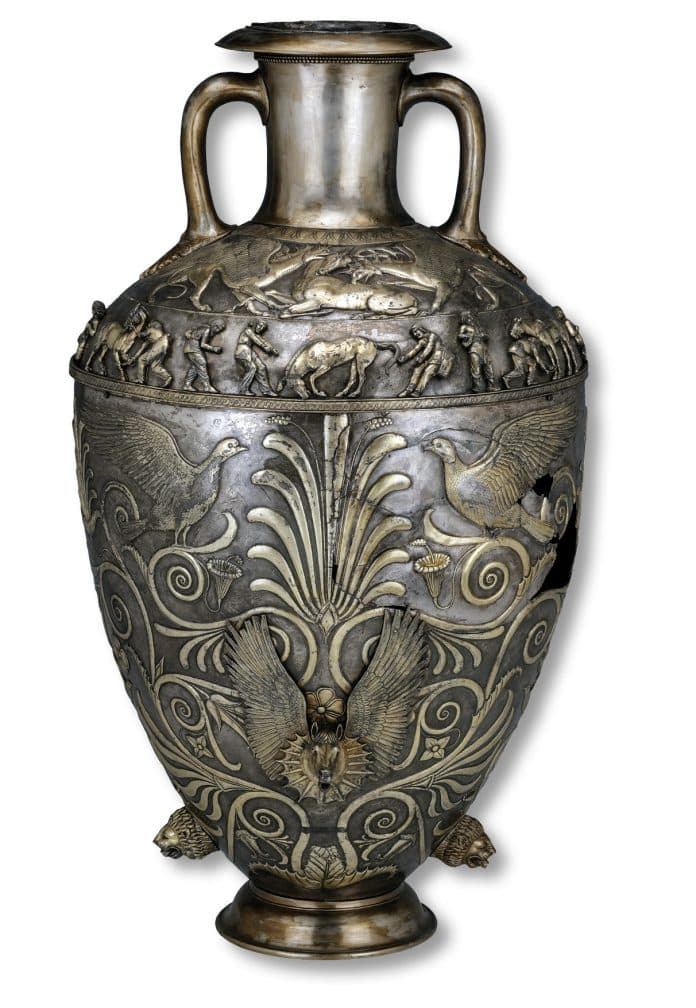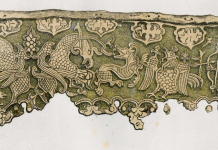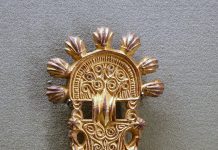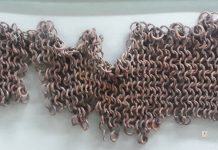The Amphora was found in 1863 in an impressive kurgan in the vicinity of Nikopol city in Ukraine and instantly taken to Hermitage. The center of Chertomlyk barrow was 20 meters high and 60 meters in diameter, although the additional chambers ran to a distance of additional 150 meters. The barrow was surrounded by a stone plinth, and a stone alley led to it across the steppe. Dr. Edward Minns introduced the Vase to the international audience in his book ‘Scythians and Greeks‘ in 1913: “[The Vase] stands about 2 ft. 4 in. (70cm.) high with a greatest breadth of about half as much and is in the form of an amphora with a base instead of a point below. In the neck is a fine strainer and there are strainers in the three outlets. Of these the principal in the midst of the main front of the vase is in the form of a horse’s head, itself treated realistically but surrounded by a kind of frill taken from the rayed comb of griffins, flanked by great wings. The side outlets are rather conventional lion-heads. Each outlet was furnished with a plug attached by a chain. This arrangement suggests that the vase was meant for some liquid with scum or dregs, most probably kumys: strainers are common in rich Scythic graves. Below the neck, which is left plain, the shoulders of the vase are decorated by two bands of reliefs. The upper one, slightly repousse and heightened with gilding, offers on each side a scene of two griffins attacking a stag. The band below this goes continuously round the vase and bears the well-known scene of breaking in a filly, or whatever it may be; the technique is curious. The figures have been separately cast solid, gilded, and soldered on to the ground. Lassos and reins were in silver wire now broken away but remaining in the grasp of some figures. It is not necessary to insist on the ethnographic importance of this scene, nor on its artistic perfection. Its exactness is shown by the care with which two different breeds of horses are distinguished. These cast figures are in equally high relief on all sides, but the repousse work is higher at the front and shades off so that behind forms are only indicated by engraving and gilding. Below the band of Scythians, the whole surface of the vase is covered with arabesques made up of palmettes, flowers, tendrils, and leaves of acanthus with storks and other birds about the branches. Some have found this a reminiscence of the luxuriant vegetation of the steppe! The whole work is perhaps the finest extant example of toreutic at the moment of its most consummate mastery, when it was ministering to the suddenly blown luxury of the newly founded Hellenistic kingdoms. An artist of such skill could hardly have been under the necessity of seeking his fortune in the perilous chances of nomad life… This is a masterpiece produced when the very highest art was no longer flourishing, but such decorative work as this was at its very best. Prof. Furtwangler in an obiter dictum assigns the vase to the end of the Vth century, but he gives no grounds and it is hard to think that either figures or ornament can be anything like so early. It corresponds with the naturalistic treatment of barbarians characteristic of the Pergamene school, as in the statues set up by Attalus at Athens, e.g. the motive of the Scyth with one shoulder bared which recalls the Persian at Aix.”
As it turns out, Prof. Furtwanger was correct and Dr. Minns was wrong about the dating of the vase. There is a great probability that Scythian king Atheas (ca. 429 BC – 339 BC) was buried in the Chertomlyk barrow. The king is famous by the fact that at age of 90 years he fought against Philip II of Macedon, the father of Alexander the Great and was killed in the battle. Read about New Perspective on the Outcome of that Battle >

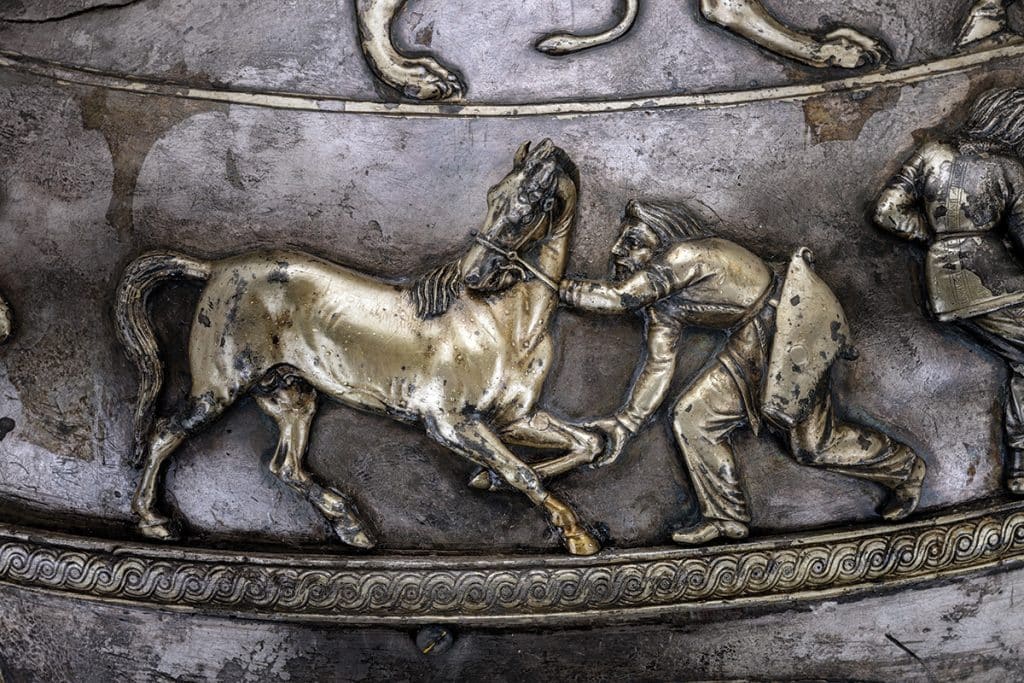
“Royal Scythia, Greece, Kyiv Rus” book has more information about the Amphora and other famous Scythian artifacts discovered in Ukraine.



